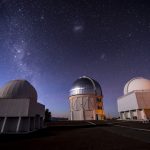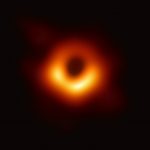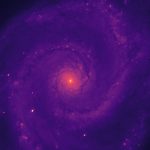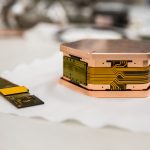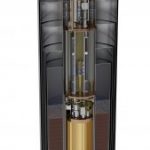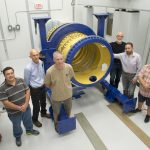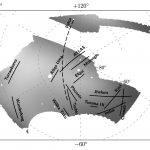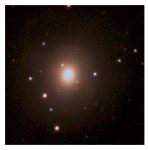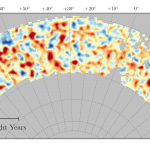Why is our universe accelerating in its expansion? If Einstein’s theory of general relativity is correct, then the dark energy that drives this expansion accounts for nearly 70% of the total energy in the universe. However, precise measurements of the history of this expansion may reveal that new dynamic forces are in play. The Dark… More »
Fermilab Cosmic Physics Center
These research organizations — the University of Chicago and the U.S. Department of Energy’s Fermi National Accelerator Laboratory and Argonne National Laboratory — worked together to build a new, ultra-sensitive camera for the telescope, called SPT-3G, which contains 16,000 superconducting detectors. Exploiting the technical capability and expertise of its Silicon Detector Facility, Fermilab led the… More »
The Dark Energy Spectroscopic Instrument seeks to further our cosmic understanding by creating the largest 3-D map of galaxies to date. Below is a press release issued by Lawrence Berkeley National Laboratory announcing first light for the optical lenses of this extraordinary instrument. The U.S. Department of Energy’s Fermi National Accelerator Laboratory is a key player in… More »
Fermilab is providing technology and expertise for the SuperCDMS SNOLAB project, which will expand the hunt for dark matter to particles with properties not visible to any other experiment. The U.S. Department of Energy Office of Science and the National Science Foundation have approved funding and start of construction for the SuperCDMS SNOLAB experiment, which… More »
New result draws on 30 years of research and development and begins the definitive search for axion particles Forty years ago, scientists theorized a new kind of low-mass particle that could solve one of the enduring mysteries of nature: what dark matter is made of. Now a new chapter in the search for that particle… More »
A press release on the Dark Energy Spectroscopic Instrument (DESI) was issued by the DESI collaboration. The U.S. Department of Energy’s Fermilab is a member of the collaboration, bringing expertise gained during the design, building and operation of the Dark Energy Camera to this next-generation instrument. Fermilab scientists are managing key elements of the construction, including the heavy… More »
Also announces discovery of eleven stellar streams, evidence of small galaxies being eaten by the Milky Way At a special session held during the American Astronomical Society meeting in Washington, D.C., scientists on the Dark Energy Survey (DES) announced today the public release of their first three years of data. This first major release of… More »
The world will soon be celebrating the hunt for the universe’s most elusive matter in a series of Dark Matter Day (www.darkmatterday.com) events planned in over a dozen countries. The events, planned on and around the formally recognized day on Oct. 31, 2017, will engage the public in discussions about dark matter, which together with… More »
Scientists using the Dark Energy Camera have captured images of the aftermath of a neutron star collision, the source of LIGO/Virgo’s most recent gravitational wave detection A team of scientists using the Dark Energy Camera (DECam), the primary observing tool of the Dark Energy Survey, was among the first to observe the fiery aftermath… More »
New result rivals precision of cosmic microwave background measurements, supports view that dark matter and dark energy make up most of the cosmos Imagine planting a single seed and, with great precision, being able to predict the exact height of the tree that grows from it. Now imagine traveling to the future and snapping… More »










